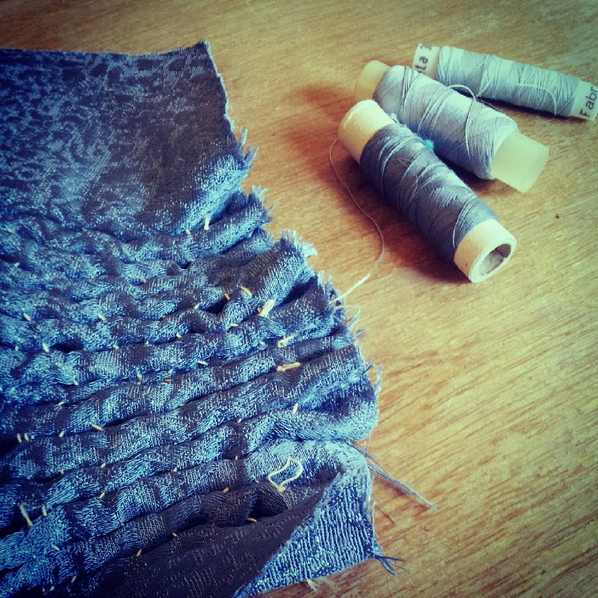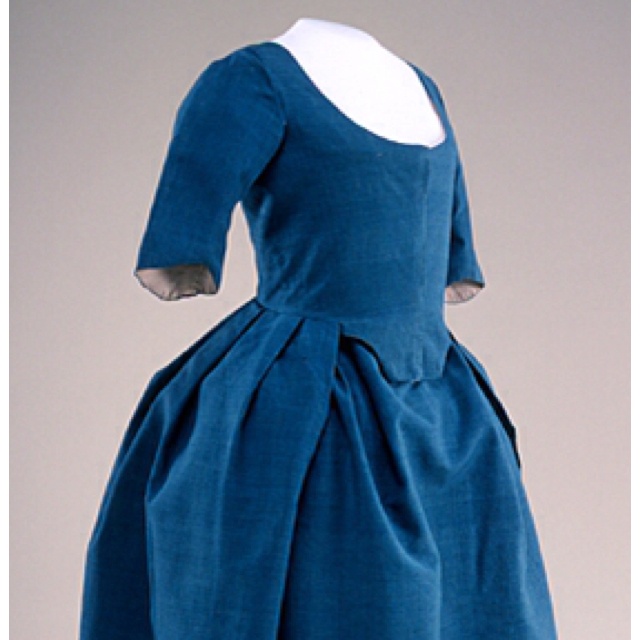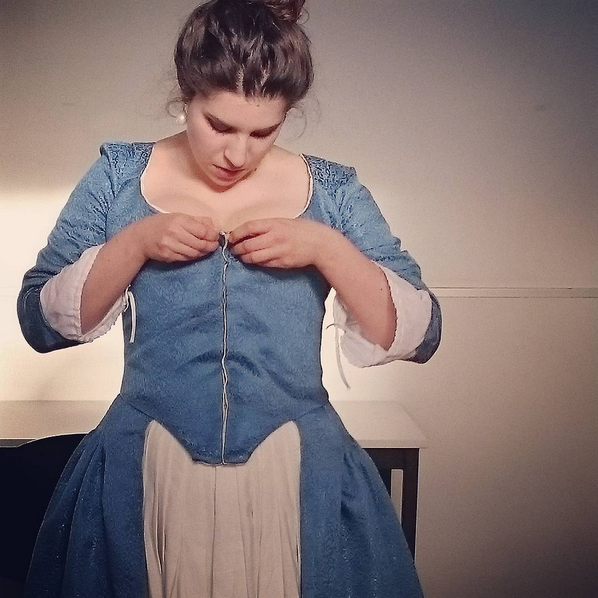

|
04-Mar / 1 COMMENTS

The building of my historical costume capsule did not start out as a capsule at all. I went about it thinking I will probably only make one general historical-sentiments evoking garment, that I could use again and again throughout the performances of the 2016 season. My male counterpart singer-actor (also my husband) already had such a costume, and very quickly I saw the great effects it had during performances, that I figured I would need one of my own. The initial effects were signaling to the audience of a different kind of performance. That the wearer was a character, bridging the gap between a pure musical concert and a theatrical one, tying both the sedentary concert, and old salon experiences together, making sure the audience is open to something else happening in the next 60 minutes.
This is a good time to mention that this endeavor of fashioning myself with a specific look, for a specific performance, to get a specific effect from the public, was a one woman operation planned for a small budget. In place of costume designer, seamstress, and wardrobe department, there was just one person dreaming and doing, and their official training thus far was a masters in early music singing with specialization in historical acting.
Going into this project, that as we already established, was not my main gig by a long shot, meant I would have to make plenty of choices. From honing in on the historical period this garment would be based upon, to the type of garment I would like to make, to the fabric I would use- decisions that would influence the story I wanted to tell, and would shape the way the audience would eventually experience the performance. All these decisions seemed to give way to more questions that had to be decided upon. One of the first challenges with the project had to do with the fact that for the first performance in 2016 I was singing mostly repertoire from the mid to end of the 18th century, but I was also declaiming a speech by Shakespeare. How should one reconcile this vast time span with one garment? Making more than one item of clothing was definitely out of my budget. I did not even know if I had the skill set to create one outfit.

What eventually did help narrow down on a decision that would make sense for me, was focusing on the live performance, and considering what tools, and knowledge I actually had at my disposal at the time. To prepare my repertoire, I was using mainly declamation sources from the 60’s and 70’s of the 18th century – mostly from England (I was using them for the Shakespeare speech as well). Therefor choosing to create a style that was prevalent in England in the latter part of the 18th century felt like a natural choice. The performance was meant to hark to and old private Salon experience, so I decided that a more simple silhouette would be a better choice, and so I Ianded on the 1770’s English style gown. Having a more contained silhouette also meant greatly for my pocket- less fabric meant less expenses.
When looking for fabrics I ended up buying a medium blue heavy brocade fabric, that was originally meant for upholstery. The blue fitted well withing the foyer of the theater, where our performance took place. This location was decorated at the time in light cremes, with accents of light turquoise and blues and I wanted the garment to relate perfectly to the place without any sets. The foyer was the salon, and the garment was a harmonious part of it. The idea of a brocade fabric, which have two usable sides to it, in my case a more mat side, and a very shiny side, was very interesting. However, by creating the garment from a very sturdy (furniture grade) fabric, perhaps wasn’t the best choice for a beginner’s first project. It played nicely, not moving too much during sewing, but at times was very bulky, and I still didn’t know how to easily go around that challenge. A few years later, the choice of a thicker fabric proved to be helpful though, keeping me warm during performances in cold- drafty locations such as castles or churches.

Looking back, many of the choices I made for this my first- and very scary attempt, were colored by the perhaps naive idea; that combining early acting techniques (along with their particular way of movement), with a garment that could have been used at the time, would somehow give me more information about the movement and acting. And boy, this exercise in embodiment did give me some more information. Just not the information I was expecting.
Sorry to leave everyone with the thrilling historical costuming cliff hanger, but I hope to write more in the future about my prejudices starting this project, and the experiences that have led me to think other thoughts today. Please let me know your thoughts in the comments bellow!
Historical Acting Historical costuming Michal Bitan
You are so talented. The clothes you have meticulously sewn for your performances over the years add an authentic and spectacular layer to your exquisite singing.